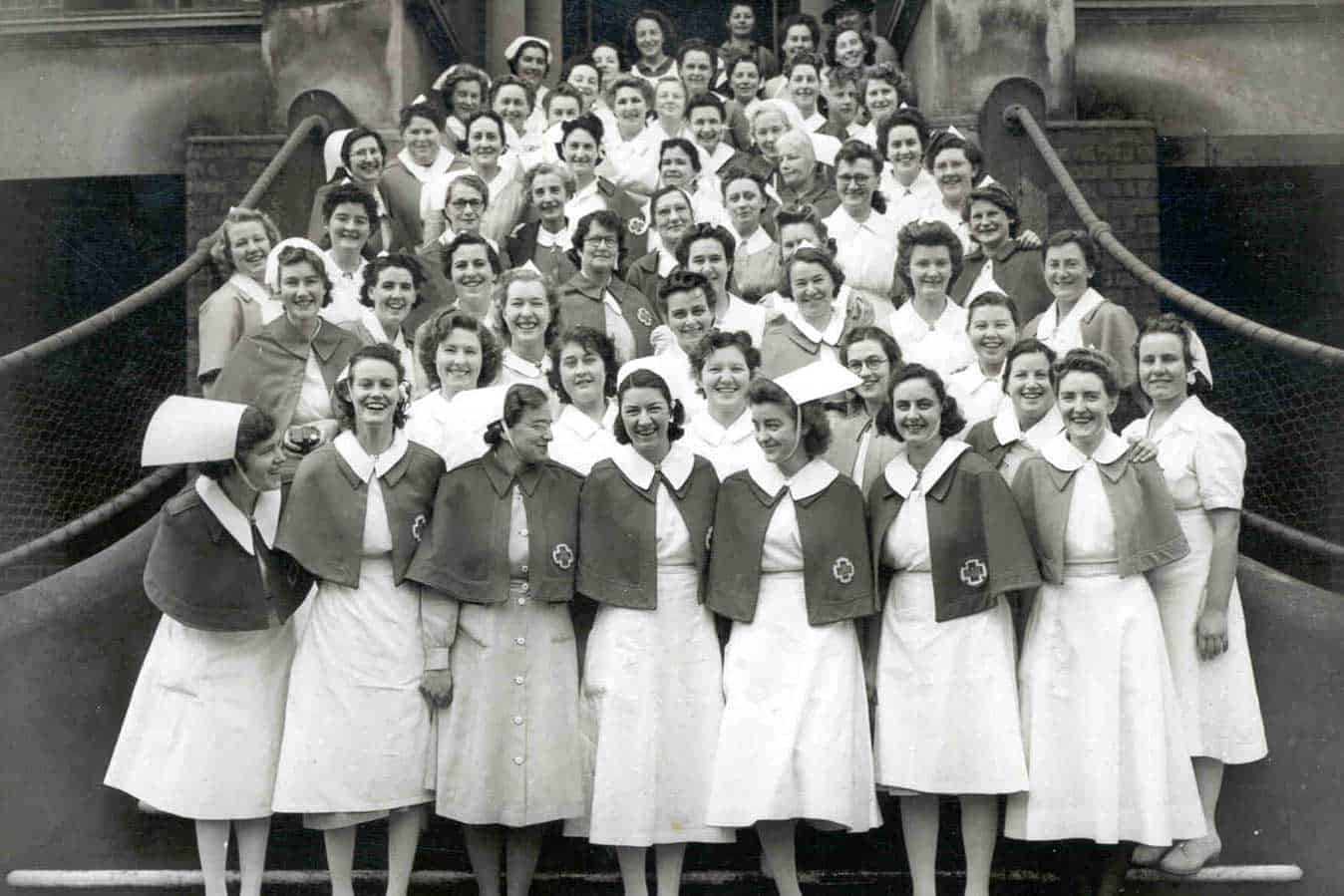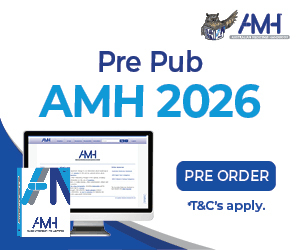Australia’s first Commonwealth Chief Nursing and Midwifery Officer, Dr Rosemary Bryant, has shared her reflections on the evolution of nursing over the past 50 years in the March-May 2022 issue of the Australian Journal of Advanced Nursing (AJAN).
During the early days of her career, Dr Bryant describes both embattlement with the “day-to-day hierarchal nature of our professional environment” and, at the same time, joy as she went about delivering care to patients.
“We were at the bottom of a very big pile with very little power,” she recalls.
“This led to a perception of change only being brought about by conflict, a situation which to a degree still exists until this day. We had internalised notions of being seen as followers and not leaders in changing healthcare.”
According to Dr Bryant, significant international and system developments that had a profound effect on the development of the profession began with the 1948 Declaration of Human Rights, adopted by the General Assembly of the United Nations. The Declaration included the right to social security, health, education, racial equality, and equality of the sexes.
The latter, she writes, helped shape nursing, as it became swept up in the women’s movement and rise of feminism in the 60s and 70s.
In 1948, the Chifley Labor Government introduced the Pharmaceutical Benefits Scheme (PBS). Profound societal changes also occurred in the post-war period, such as smaller families, increases in the standard of living, the rise of feminism, and developments in education, Dr Bryant writes.
Years later, universal access to healthcare was introduced in Australia as part of the reforms of the Whitlam Labor Government in 1975 under the banner of Medibank – later Medicare. It provided free access for Australians to hospitals and led to subsidised access to health professionals such as medical practitioners and nurse practitioners.
“Nursing, as a female dominated profession, was affected by all these changes. Nurses played a significant role in universal access to healthcare as they were central to the implementation of new and expanded health services,” says Dr Bryant.
From the 1960s, hospitals began to develop into the facilities we see today, and the role of nursing and nurses delivering holistic patient care through enhanced treatments intensified.
“They needed to become technically competent and move to a plane where nursing diagnosis and interventions contributed to patient outcomes.”
Around this time, it became evident that the educational preparation of nursing needed a radical overhaul. In the 70s and 80s, there were several major drivers to transfer nursing education from the health sector into the education sector.
In the beginning, the main reasons were that in the face of rapid technological change within the health system, nurses needed a much broader educational base in order to function with technical competence while continuing to provide care to patients and families.
“It was clear that if the profession were to contribute on an equal basis to the healthcare debate, there was need for them to have a more scientific education and to move from being unsophisticated epistemologists to possessing a more comprehensive understanding of the political economy of the health system and their potential to change it,” Dr Bryant writes.
The campaign to transfer nursing education into the education sector began in 1973 with a small group of nurses representing all the major nursing organisations in Australia coming together to devise a national plan of action. Lobbying materials were produced and a plan to approach every federal candidate was developed in each of the States and Territories. The initial resistance from politicians was enormous.
Starting around the time of the second wave of feminism and with nursing being overwhelmingly female, the campaign to transfer nursing education became a feminist issue.
During this period, there were two cases in the Industrial Commission in 1969 and 1972 on equal pay. The first was equality of pay between the sexes, and the latter equal pay for work of equal value. Numerous cases to increase salaries for nurses were mounted during this era and more recently. Nurses became more aware of their centrality to the health system and demanded rightly to be properly paid.
“Cases for salaries and conditions which were more in line with similar occupations in the wider community continued at both state and national levels throughout the 1980s and 1990s until the present. Gradually nursing and midwifery wages caught up with expectations although time lags were frequent,” Dr Bryant writes.
The campaign to transfer nursing education was finally achieved nationally on 24 August 1984 when in principle support was given. It took the better part of 11 years with national elections coming and going and powerful forces opposing the shift.
The transfer agreed to in 1984 was then debated at individual State and Territory level. Initially, the programs were established in colleges of advanced education at diploma level, but the goal was bachelor level.
“Once the question of the location of the foundational programs in nursing was settled, postgraduate programs gradually followed to the point today where we have large faculties of nursing and midwifery with a wide range of offerings. The effect of this has been to enhance access by nurses and midwives to education particularly specialist education,” Dr Bryant writes.
Another successful campaign was the goal of national nursing and midwifery registration.
Established in 2010, the National Registration and Accreditation Scheme encompassed most of the health professions and provided for common registration and accreditation standards across the professions, putting nurses and midwives on equal footing with other health professionals.
Lastly, Dr Bryant says the issue of leadership over the past 50 years has been critical to achieving goals and developing the profession. Visionary nursing leaders throughout the profession are crucial, as are cooperative relationships between the various strands of nursing and midwifery.
Whilst much has been achieved, in both the development of healthcare and of nursing and midwifery, challenges remain, such as policy development of the health workforce.
Tracing over the evolution of nursing over the past 50 years, Dr Bryant considers the transfer of nursing education into the mainstream the most significant.
“My view is that the transfer of nursing education into the mainstream and eventually into universities is the most critical factor in our development in my lifetime.”
Read the full editorial here









3 Responses
My Dad was sent to America and Canada in the early 70’s for 3 months, to do a report on their university nursing degrees. This was the preparation for what we have today. My Dad is now 92 and still the go to person to answer our medical questions. My 42 year nursing career was inspired by my nursing parents.
I have been involved in nursing since 1973, not completing my training then but, commencing my university nursing education in 1986. I have lived through many of the changes discussed. Now retired after gaining a Masters degree in Midwifery, I am greatly saddened by the disintegration of Midwifery and nursing. So many things are wrong with the health system. Focusing on nursing in the public health sector is just one area. However if we did just focused on this area and improved the benefits would ripple through to all areas. I found it insulting to myself and my colleagues when we were being told how to speak and emotionally treat clients, patients. Patients complaining about how they were spoken to or being treated was a symptom of a sick system, not because nurses were at fault. But thanks for making staff feel it is their fault. Management as always are not listening. Health systems always BLAMING nurses if patients have complaints. We need to care and support our nurses. Simple things like respect, acknowledging differences in skills, listening to their requirements. Don’t send around pizzas when things are difficult, provide more staff maybe putting in place care for staff strategies. Regular fresh fruit trays for staff to have because they never get meal brakes.
I started my nursing career in 1969 – yes, that’s 53 years ago! With a group of some 100 young , eager girls – the biggest intake ever in the old Royal Adelaide Hospital. Hospital based training in the Nightingale wards progress to Team Nursing when novice mentored by experts model is practiced. Progressing to those of us helping to shape nursing studies in the tertiary sector to embrace technology, and career paths. I still reminisced the camaraderie, experts nurturing,, of the days when I trained!